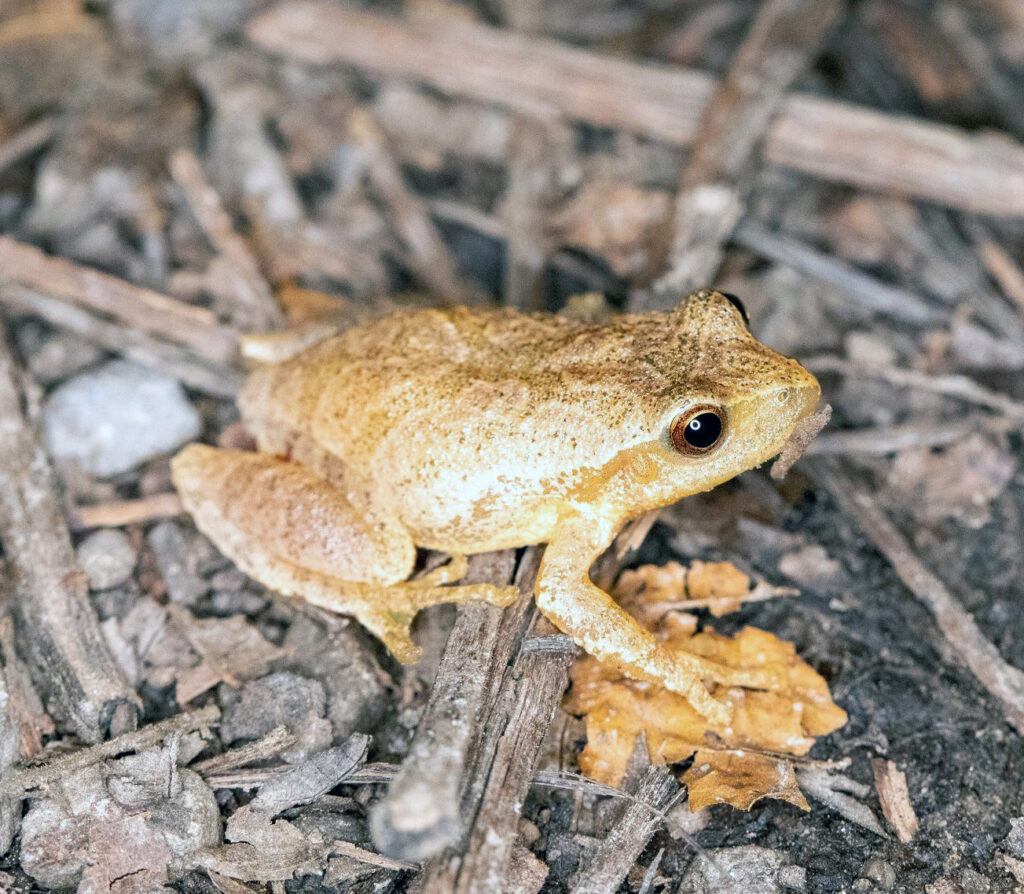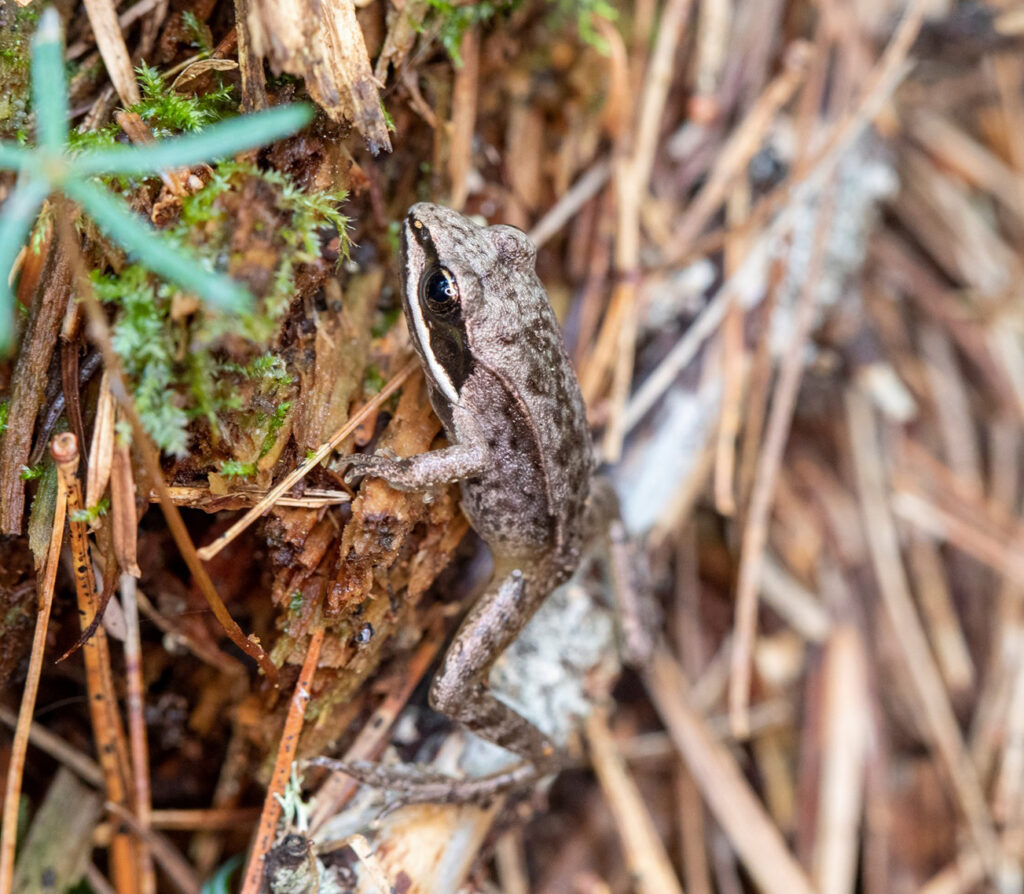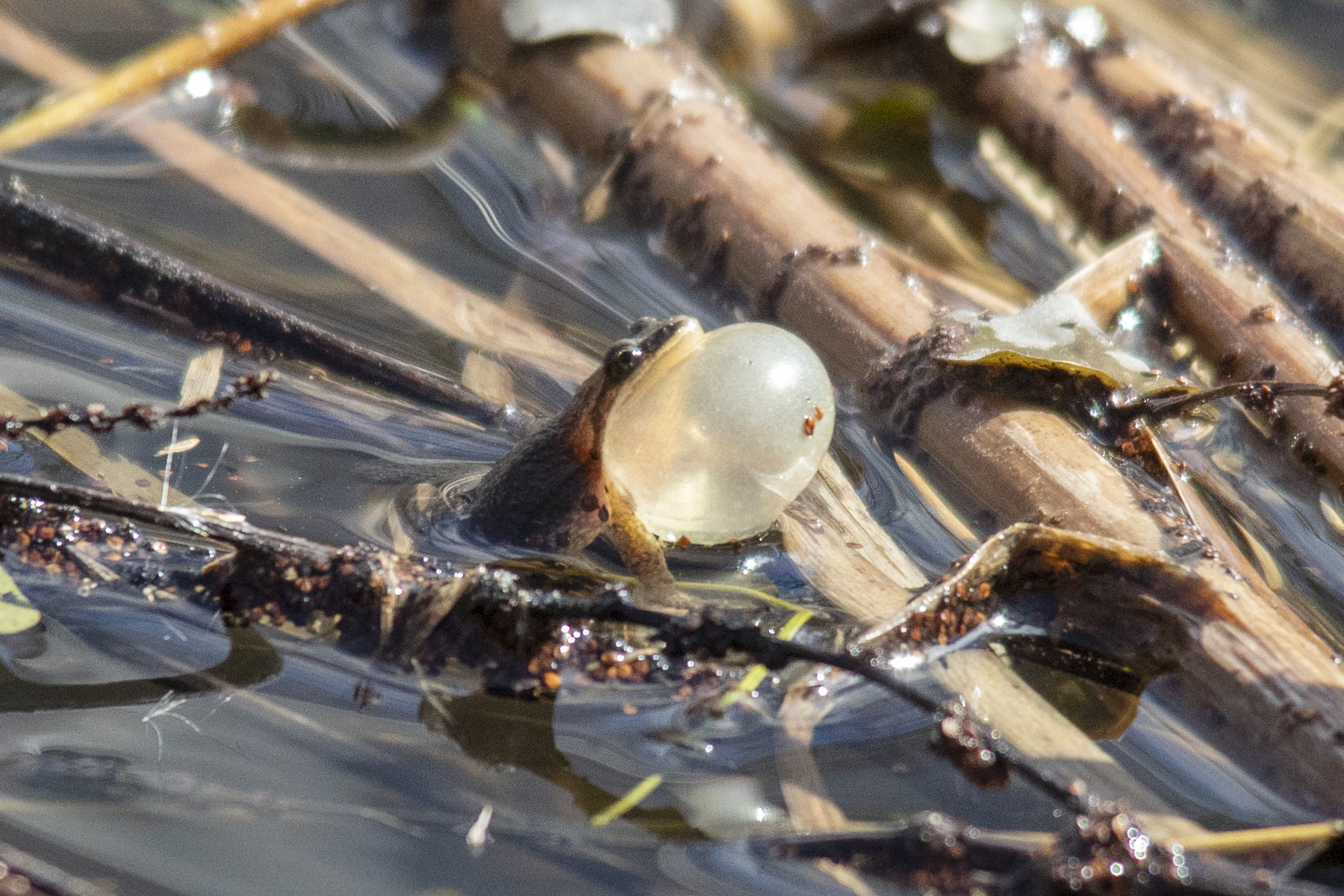The concert started with the sound of a fingernail dragged down the teeth of a stiff plastic comb. After a few seconds of silence, the soloist repeated the song: cre-e-e-e-ak. The call was answered in kind by one frog, then another. Soon there were dozens, then hundreds. A choir repeating the call of the soloist.
This concert was being performed by one of Niagara’s smallest heralds of spring: the western chorus frog (Pseudacris triseriata). Often heard but rarely seen, the western chorus frog has smooth brownish-grey skin and unwebbed toes, with a brown stripe running from its snout down to its eyes and along its side. Their scientific name refers to the three stripes down their back, which help to differentiate these frogs from the similar spring peeper (Pseudacris crucifer).
The males, who sport yellow vocal sacs, are the musical members of this frog family. To sing, the males draw air into their lungs and push it into their vocal sacs, creating the characteristic creaking song as the vocal sac expands. After withdrawing the air back into their lungs, they repeat the process. Females tend to be larger than males and lack the vocal sac.
The western chorus frog is one of Ontario’s smallest amphibians —adults are about three centimetres in length. The spring peeper is the only smaller frog found in Niagara.
Despite their small size, western chorus frogs have powerful voices; a choir of singing western chorus frogs can be heard for nearly a kilometre. On April 2, I was treated to one such performance at Short Hills Provincial Park, in a marshy area that just hours earlier had been covered in ice.
As the snow melts, water gathers in temporary pools in marshes, meadows and ditches, creating seasonal wetlands called vernal pools. Vernal pools are important habitats for many amphibians. Plants and algae grow in the water, providing food and shelter. Insects such as mosquitoes also breed in vernal pools, providing an important food source for many animals. Because they usually dry out in summer, vernal pools also lack fish or other predators that might feed on amphibians.
These vernal pools also serve as the venue for the springtime concert of the western chorus frog, and the stage where the males compete through song to draw the attention of a female.

Once a female is suitably impressed by a male’s singing, the pair mate and the female will lay hundreds of eggs attached to submerged plants. The eggs are laid in the same vernal pool where the courtship concert takes place.
The eggs hatch up to four weeks later and the tadpole emerges. Lacking strong jaws and limbs, the tadpoles feed on algae, decaying material, and pollen from the surface of the water. Tadpoles have gills and require water to survive; it is at this life stage that they are most vulnerable to a lack of water in the vernal pools. However, since western chorus frogs lay eggs just as these pools are forming, they have the largest possible window in which to grow to maturity before the vernal pools disappear later in summer.
By July, most tadpoles have transformed into the froglet stage. At this point, the froglets have grown limbs and lost their gills and are ready for the terrestrial stage of their life. They begin to prey on insects and other invertebrates. In turn, they become prey for birds and snakes.

Beyond the threat of their vernal pools drying out, the environment also poses hazards for young western chorus frogs. Frogs living near roadside ditches are frequently killed by vehicles. Vernal pools are also at risk for contamination by insecticides or fertilizers.
In Ontario, the western chorus frog has been split into two groups: the Carolinian population (including Niagara) and the northern Great Lakes / St. Lawrence – Canadian Shield population. In 2008, this group was assigned the status of threatened by the Committee of the Status of Endangered Wildlife in Canada and is protected under the federal Species at Risk Act. Both populations are vulnerable to habitat loss, as their vernal pools are often on land valuable for real estate or commercial development.
Western chorus frogs that survive the myriad threats of their first year hibernate through the winter and are mature by their first spring. Once the spring melt starts, they emerge again and welcome spring once more with their song.

Spring would be much quieter without our frogs. It is important to preserve their habitats, or else they — and their songs — might disappear like a vernal pool in summer.
Where have you heard these heralds of spring in Niagara? Email brad@niagaranature.ca with your stories.
